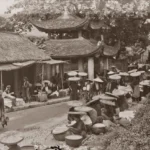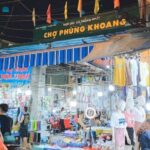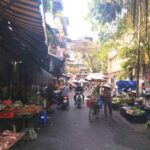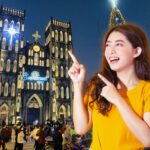Hoan Kiem Lake, formerly known as Luc Thuy Lake, boasts a deep emerald hue and a rich history dating back to the Le dynasty. This serene body of water holds a special place in the hearts of the Vietnamese people, as it is intimately linked to the legendary life of Le Loi, a national hero and the founder of the Later Le dynasty.
Le Loi was born in Lam Son, Thanh Hoa, to a family with a strong patriotic tradition. Appalled by the brutal rule of the Ming invaders, he vowed to drive them out of Vietnam. Refusing their offers of official positions, he declared, “A man should help in times of great calamity and make great contributions to leave an eternal reputation, instead of being a servant of others.”
In 1416, Le Loi and 18 close companions swore an oath to fight the invaders at Lung Nhai. News of the Lam Son insurrection spread, attracting heroes and patriots such as Nguyen Trai, Tran Nguyen Han, Nguyen Chich, and Le Lai to join the cause.
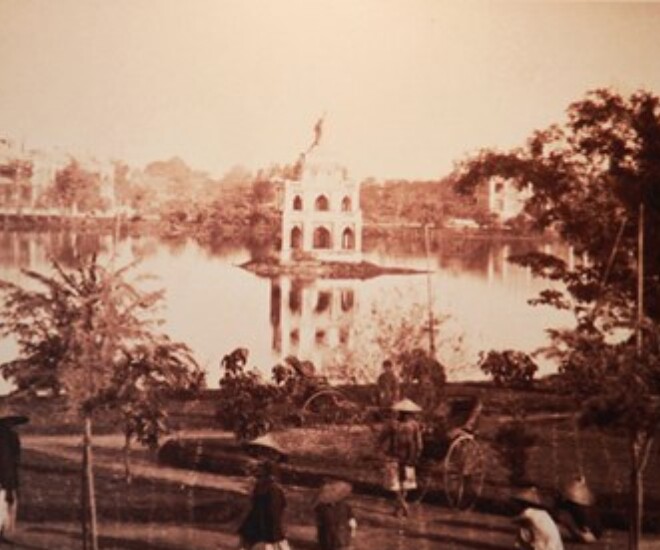
Hoan Kiem Lake, also known as Ho Guom, is a natural freshwater lake located in the Hoan Kiem district of Hanoi’s city center. Today, it is a popular gathering place for community activities and leisure.
After meticulous preparations, Le Loi proclaimed himself as Binh Dinh Vuong in early 1418 and issued a call to arms for the people to rise against the invaders. He was the soul and supreme leader of the Lam Son insurrection, guiding the people to victory and reclaiming independence from the Ming dynasty.
During the dark period of the Ming invasion, a fisherman named Le Than lived in Thanh Hoa. One day, he felt an unusual weight in his net and eagerly anticipated a large catch. However, he was disappointed to find only an old sword. He tossed it back into the river, but the sword reappeared in his net twice more. Perplexed, he decided to take it home and keep it in a corner.
Le Than, a robust and patriotic man, joined the Lam Son insurgents. He participated in significant battles and earned Le Loi’s trust. On one occasion, Le Loi and his generals stayed at Le Than’s house while passing through Thanh Hoa. They noticed the old sword emitting a strange glow and approached it curiously. They discovered the words “Thuan Thien” engraved on the sword but thought nothing of it, assuming it was an ordinary weapon.
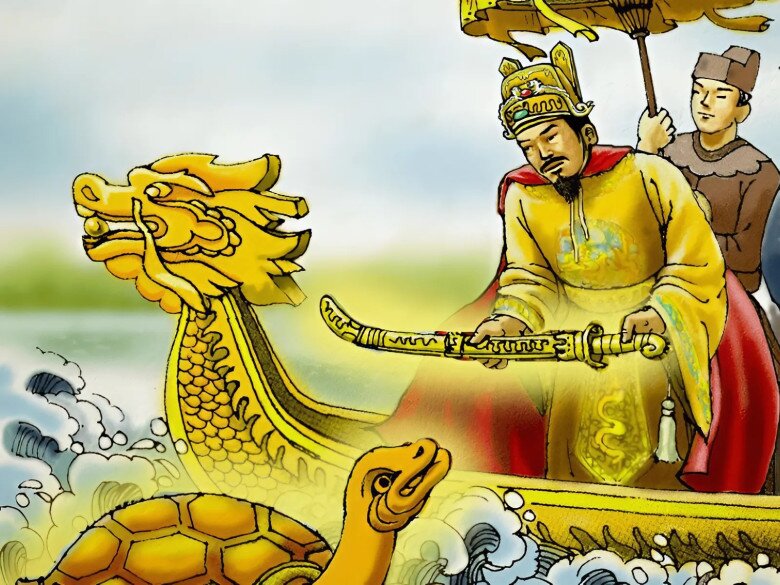
Under Le Loi’s brilliant leadership and armed with the divine sword, the Lam Son insurgents defeated the Ming army. Le Loi later returned the sword to the sacred turtle in Hoan Kiem Lake.
The Lam Son insurgents continued their campaign against the Ming invaders, but they suffered a setback in one battle and Le Loi was forced to flee into the forest. While seeking refuge, he spotted a glowing object on a tree branch. Intrigued, he climbed up and discovered a hilt adorned with sparkling gems. Recalling the glowing sword at Le Than’s house, he retrieved the hilt.
A few days later, Le Loi met with Le Than and shared the story of finding the hilt. He borrowed the sword, and to everyone’s amazement, the hilt and sword fit together perfectly. The sword shone brilliantly and became incredibly sharp.
With this divine sword, the Lam Son insurgents achieved victory after victory, weakening the Ming army. They transitioned from hiding in the forest to direct confrontations. Their food supplies improved, and their morale soared with each triumph.
After Le Loi’s triumph over the Ming invaders, peace returned to the land. In early 1428, while boating on the lake, the king encountered a golden turtle. Playfully, he drew his divine sword and tapped the turtle’s head. Suddenly, the turtle snapped the sword from his hand and disappeared into the depths of the lake. Despite ordering the lake to be drained, neither the sword nor the turtle was found. Thus, the lake was renamed Hoan Kiem Lake, reflecting the belief that the turtle had returned the sword to the heavens, signifying the end of warfare.
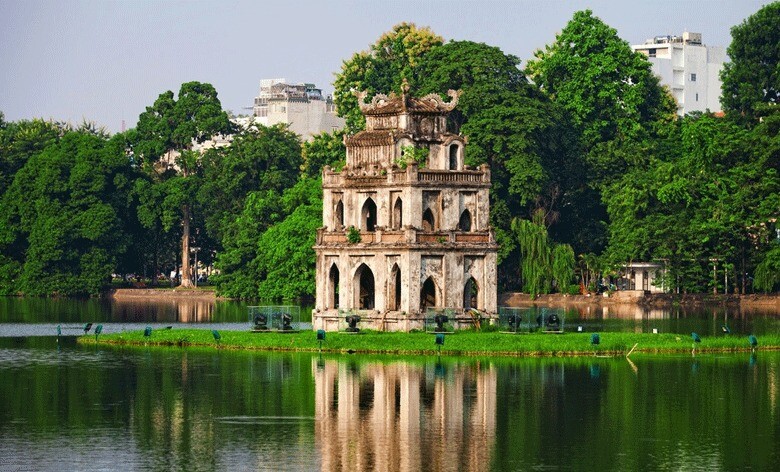
Hoan Kiem Lake became a recreational spot for the elite and powerful in the 15th century. King Le Thanh Tong ordered the construction of a grand pavilion on the northern island, where he enjoyed fishing and relaxing during the summer.
Must-Visit Attractions Around Hoan Kiem Lake
Turtle Tower
The Turtle Tower stands majestically on Turtle Islet in the heart of Hoan Kiem Lake, serving as an iconic architectural symbol of Hanoi. Constructed between 1884 and 1886, it showcases a unique blend of French architectural influences and traditional Vietnamese elements.
The tower features three levels, each smaller than the one below, creating a graceful silhouette. Pointed archways grace the front and back of the tower, while the sides boast three archways each. Delicate balconies encircle the first and second levels, adorned with four gracefully curved finials at the corners. Atop the tower, a five-pointed star represents the nation of Vietnam.
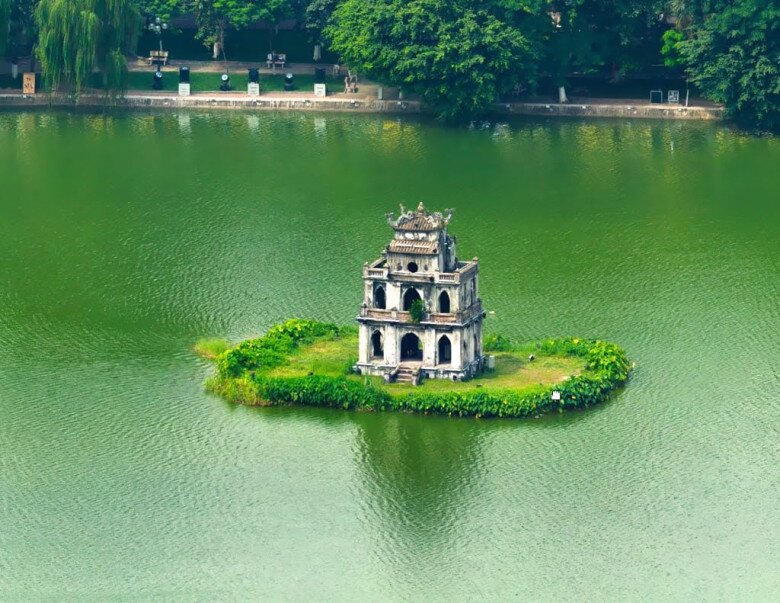
With its distinctive design and location, the Turtle Tower has become a cultural emblem of Hanoi.
The Huc Bridge
The Huc Bridge, a proud symbol of Hanoi, gracefully spans Hoan Kiem Lake, resembling a silk scarf draped across the azure water. Its vibrant red hue stands out against the ancient backdrop, creating a stirringly beautiful scene.
The bridge’s design mimics a shrimp’s curved body, with 15 spans and 32 round wooden pillars arranged in 16 pairs. The deck is crafted from lim wood, and the railings are painted a vivid red. Adorning the balustrade are 36 wooden carvings of kìm, a traditional Vietnamese tool. The Huc Bridge is an iconic element of Hanoi, enhancing the romantic and ancient allure of Hoan Kiem Lake.
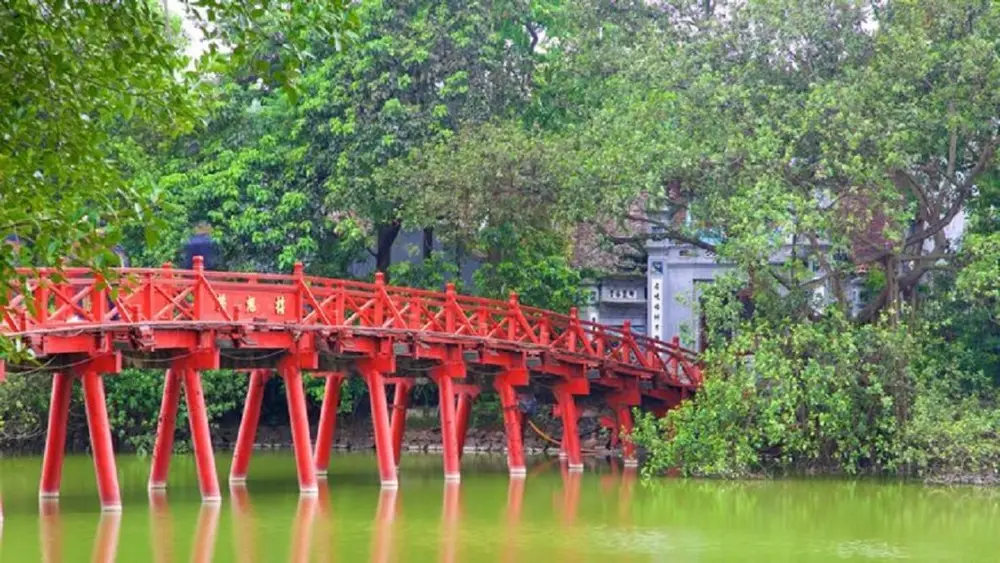
Beyond its aesthetic appeal, the Huc Bridge holds profound cultural and historical significance. It has witnessed the ebb and flow of Hanoi’s history, serving as a testament to the city’s enduring spirit.
Ngoc Son Temple
Ngoc Son Temple, a jewel nestled within Hoan Kiem Lake, captivates visitors with its architectural splendor and rich historical context. Stepping through its gates, one is greeted by the majestic Thap But (Pen Tower), the ancient Dai Nghien (Ink Stand), and the vibrant The Huc Bridge, each contributing to a harmonious and solemn ensemble.

Ngoc Son Temple is dedicated to Van Chuong De Quan, the god of literature, and Tran Hung Dao, a national hero who played a pivotal role in defeating the Mongol-Yuan invaders. It serves as both a spiritual sanctuary and a repository of historical knowledge, reflecting Vietnam’s deep-rooted reverence for scholarship and its rich cultural heritage.
Pen Tower and Ink Stand
On the banks of Hoan Kiem Lake, in the heart of Hanoi’s ancient streets, stand the Pen Tower and Ink Stand—symbols of Vietnam’s enduring reverence for learning. Constructed in 1865 during the reign of Emperor Tu Duc, these structures embody not just historical and cultural significance but also a unique architectural allure that attracts visitors from near and far.
The Ink Stand, resembling an enormous inkstone, rests on the backs of three frogs, symbolizing stability and resilience. Inscribed on its surface is a 64-character poem by scholar Nguyen Van Sieu, celebrating Vietnam’s scholarly tradition and love of learning. The intricate calligraphy showcases the profound respect for knowledge held by our ancestors.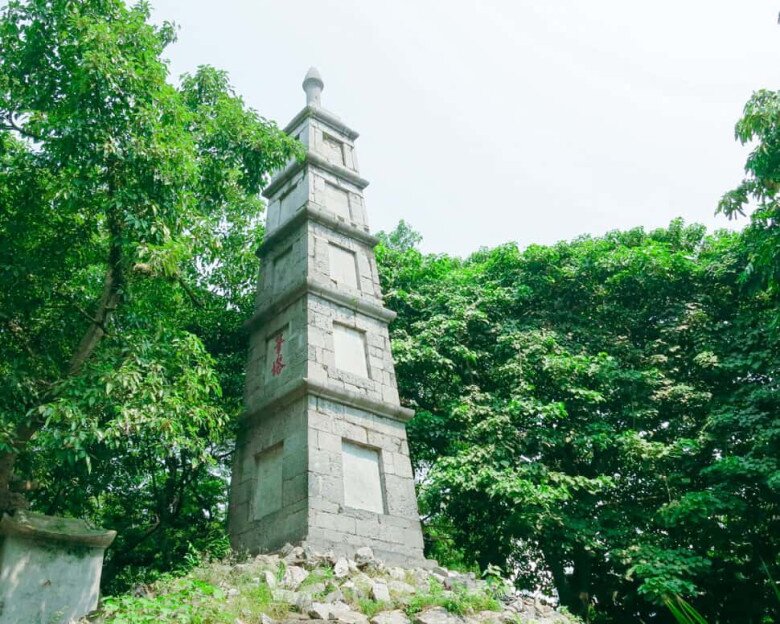
The harmonious pairing of the Pen Tower and Ink Stand reflects the Vietnamese people’s devotion to scholarship and their esteem for the written word.
Soaring skyward, the Pen Tower resembles an enormous brush pen, its tip pointing toward the heavens. Inscribed on its body are the words “Ta Thanh Thien,” conveying the aspiration to “write upon the blue sky.” This tower symbolizes the Vietnamese people’s unyielding pursuit of knowledge and their ambition to reach new heights.
A Glimpse into the Past: Rare Photos of Hanoi’s Oldest Market that Stood the Test of Time
Chợ Bưởi, one of the oldest traditional markets in Hanoi, is a bustling hub of commerce and a repository of the cultural heritage of the ancient Thang Long region. Despite the vicissitudes of history, the market has retained its unique periodic assembly format, drawing traders from far and wide to buy and sell plant and animal breeds, as well as local specialties and artisanal products.
The Century-Old Market in the Heart of the Ancient Quarter: From Humble Beginnings to a Rare Remnant of Rural Life in the Capital
Hanoi, a bustling capital with a blend of modern and ancient charm, is home to the quaint Thanh Ha Market. Nestled beside the renowned Dong Xuan Market, this hidden gem exudes a unique, humble atmosphere. A step inside reveals a tranquil and rustic setting, a stark contrast to the bustling city outside. Yet, within its walls lies a vibrant community and a wealth of stories waiting to be uncovered by those who venture beyond the surface.

























